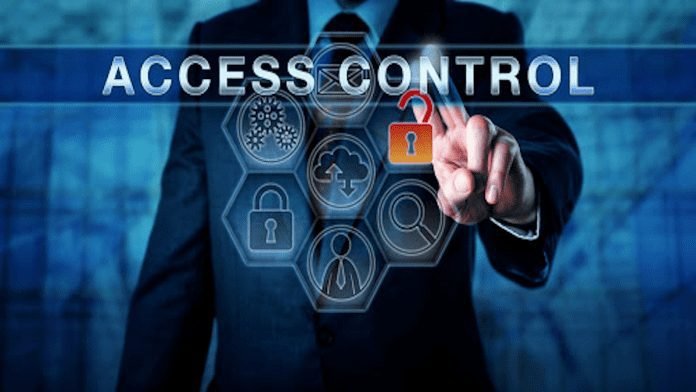Last Updated on February 10, 2025 by Bisma Sehar
Access control is a critical aspect of information security, yet it is often misunderstood. This article will discuss what access control is and how to implement it in your organization. We will also cover the different types of access controls and how they can be used to protect your data. By understanding access control, you can keep your data safe from unauthorized access and prevent costly security breaches.
Table of Contents
What is Access Control?
Access control is a security mechanism that allows only authorized users to access sensitive data or systems. You can use access control to manage SoD risk analysis, protect your company’s data, and secure your systems from unauthorized access.
It limits access to information based on the user’s identity and role within the organization. Access control can be implemented in many ways, including passwords, tokens, badges, and biometrics.
The Benefits Of Access Control
There are many benefits to using access control in your organization. One advantage is enhanced security. With access control in place, you can restrict access to sensitive data and systems to authorized users only. This helps prevent unauthorized access and protects your systems from hackers and other threats.
Access control can also help you comply with government regulations and industry standards. This is especially important for SoD risk analysis compliance.
Another benefit of access control is increased efficiency. By restricting access to specific data and systems, you can minimize the risk of unauthorized users interfering with your operations. This can help you improve workflow and prevent disruptions caused by unauthorized access.
Access control can also help you track user activity, which is helpful for troubleshooting and security analysis.
How to Implement Access Control
There are several ways to implement access control in your organization. One way is to use passwords. Passwords are a common form of authentication and can be used to control access to websites, networks, and systems. They are also used for encrypting data. To increase the security of your passwords, you can use a password manager.
Another way to control access is with tokens. Tokens are small devices that generate one-time passwords. They can be used to log in to websites and systems, providing an extra layer of security against unauthorized access.
You can also use badges to control access. Badges are plastic cards or digital certificates identifying users and granting access to specific systems or data. They are often used in businesses and schools to limit access to certain areas or facilities and can be placed in a badge holder for extra security.
Finally, you can use biometrics to control access. Biometrics is the authentication of users based on their physical characteristics, such as fingerprints, facial features, and voice patterns. This is a more secure way to control access, as biometric data is difficult to forge or duplicate.
Choosing the Right Type of Access Control
When choosing the right type of access control for your organization, there are several factors you should consider. The first factor is security level. You need to select a type of access control that meets your security needs.
The next factor is convenience. For SoD risk analysis, you need a type of access control that is easy to use and does not require much time or effort to set up. The third factor is cost. You need to find an affordable and within your budget type of access control.
The final factor to consider is compatibility. Make sure the type of access control you choose is compatible with the systems and devices you are using. For example, if you use a Windows operating system, make sure the access control software is compatible with Windows.
Setting Up and Using Access Control
Once you have chosen the correct type of access control for your organization, you need to set it up and use it effectively. The first step is to create user accounts for all authorized users.
Next, you need to configure the access control settings for each account. This includes specifying which systems and data the user can access and setting password requirements. You also need to install any required software or hardware components.
Once the system is set up, you need to train your employees to use it. They need to be familiar with the different access control methods and know how to use them correctly.
It would help if you also established rules and procedures for using the system. This includes specifying when and how passwords should be used, what type of authentication is required, and who has the authority to grant access.
Final Thoughts
Access control is an essential part of security and can be used to protect your organization from unauthorized access. There are several types of access control methods, and each has its benefits and drawbacks. When choosing a plan, you need to consider the security level, convenience, cost, and compatibility of the system. You also need to set up the system correctly and train your employees to use it. By using access control wisely, you can improve workflow and security in your organization.
Read also: 6 Useful Ways to Improve Your Security Through Data Protection Services
















